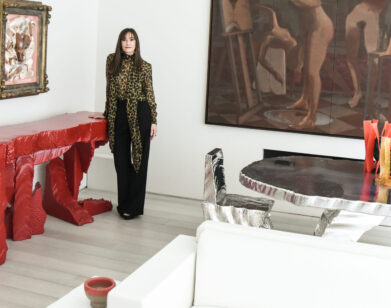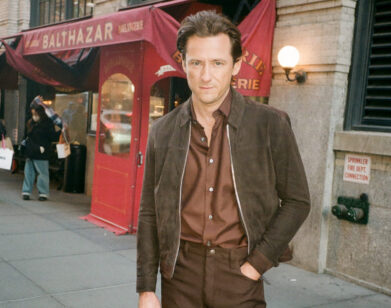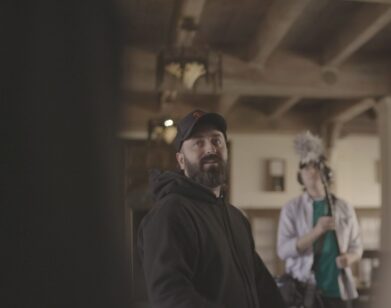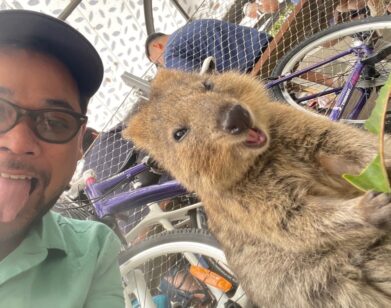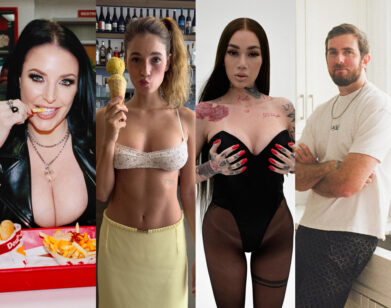Shigeru Ban Does Camper Cool
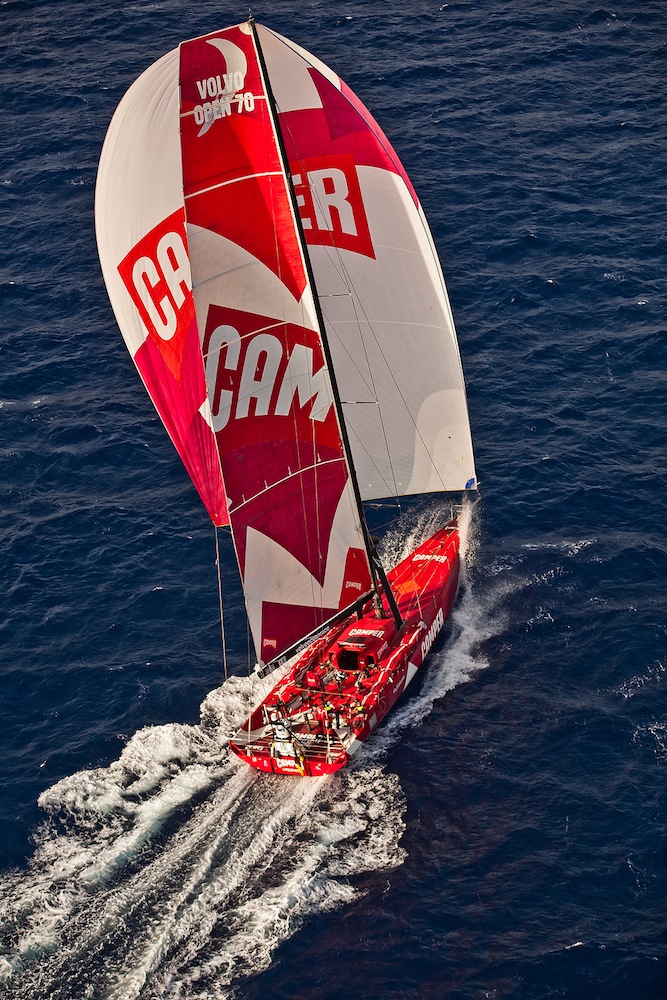
The Volvo Ocean Race, formerly known as the Whitbread Round the World Race and held every three years, is considered the benchmark for physical endurance, speed and glory on the high seas. Including nine legs, with an in-port race at each destination, it’s estimated the Volvo Ocean Race will finish after nine grueling months on July 3 in Galway, Ireland.
So far, the 2011/12 competition, which took off last Saturday from Alicante, Spain, is maintaining its legendary high-risk repuitation. Less than 24 hours after the race’s start, the six competitors were reduced temporarily to four when the mast of Abu Dhabi Ocean Racing’s Azzam boat crashed in rough weather. As Abu Dhabi hopes to reenter the race today, the four boats still on the racecourse are stuck without wind.
Camper, launched in 1975 by Lorenzo Fluxa as a hip Spanish shoemaker on his family’s island home of Majorca, has teamed up to help the comeptition move forward. At several Race destinations, Camper has set up pavilions to spread the word and sell product. Camper’s got a full collection of ocean race gear (including seaworthy shoes developed with sailing specialist Musto).
There’s so much over-the-top sport antics attached to the Volvo Ocean Race that Camper’s collapsible pavilion, looks almost too cool to be part of it. Designed by Japanese architect Shigeru Ban, known for his disaster relief structures made from plastic beer cartons and other recyclables, has created for Alicante an elegant circular pavilion is supported by cardboard columns of varying widths which telescope for transport. There’s a fabric exterior which can easily be pushed open or closed like a shower curtain to suit the light and weather.
Coming up early next year in New York is the Ban-designed Camper shop. And this fall, his first New York building, the Shutter House, an 11-story West Chelsea condo with motorized metal screens to allow the cityscape inside, was completed. It’s an extravagant work from a talent better known for flexible responses to natural disasters than luxury towers.
REBECCA VOIGHT: Do you feel like the world is finally beginning to see things your way?
SHIGERU BAN: Maybe. When I began using recycled materials in 1986, nobody was interested in ecology. I started working in disaster areas, and now there’s natural disasters everywhere.
VOIGHT: What prompted your interest in temporary structures?
BAN: It’s not temporary—everything I do can be permanent. My vision is to incorporate movement. When Camper asked me: “Can we make a pavilion that moves?” I said: “Of course!” But I really like to do both. I designed the Centre Pompidou in Metz, but at the end of this year we will complete relief housing for 190 families in Japan, and by next Easter, the temporary cathedral made from cardboard tubes, will be completed after last February’s earthquake in Christchurch, New Zealand.
VOIGHT: Would you say you combine East and West in your approach?
BAN: Well, first of all, I never studied architecture in Japan. I went to America, because I wanted to study with John Hejduk at Cooper Union. There was no information about the school in Japan, so I went to the U.S. and discovered there was no tuition for foreign students at Cooper Union. Today, there are far fewer Japanese students going abroad. I guess that’s because it’s more comfortable for them to stay at home. But I think U.S. schools are the best in the world for architecture. They have the budget to recruit top architects from all over the world to teach.
VOIGHT: Where do you live?
BAN: On planes, but I also spend two weeks a month in Paris, where I opened an office and have an apartment across from the Pompidou. During the six years I worked on Metz, I was in a cardboard tube office I put up on Pompidou’s terrace, but they kicked me out when it was finished.
VOIGHT: Where are the most interesting commissions for you today?
BAN: Europe is the best place now because they’re daring and there’s still manufacturing here. It’s not like building in the U.S. where it’s necessary to import materials from China. Before Metz I had never designed a museum, or any building, of that size. So France gave me my first opportunity—not Japan, or the U.S. Americans don’t want to take risks because of potential liability. They prefer to wait and see. And Japan is too isolated, but the French always want to be the first to choose something different. After Metz, I had many more projects from the US.

